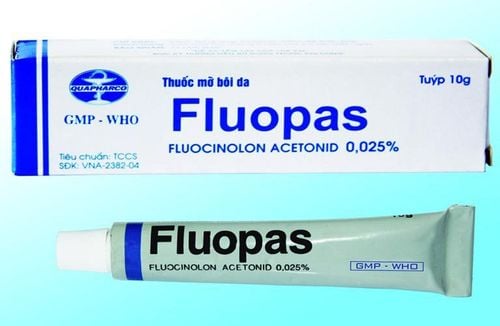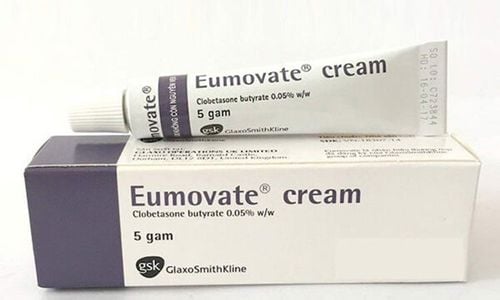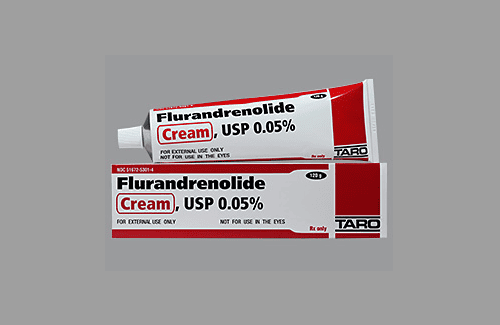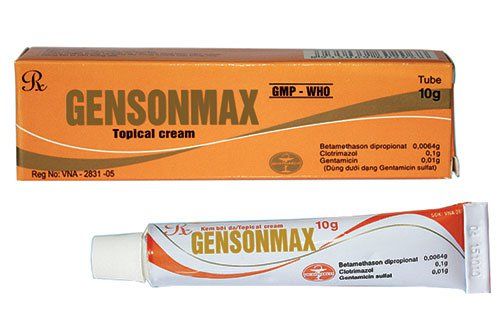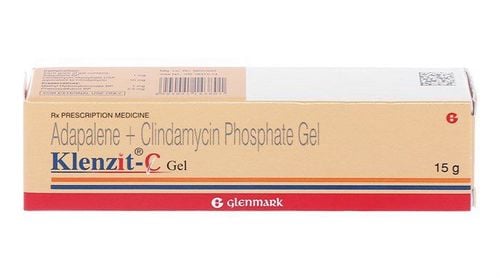This is an automatically translated article.
Dimustar belongs to the group of drugs for the treatment of dermatological diseases, with the main active ingredient being Tacrolimus. Adhering to the indications, the dose of Dimustar will help patients improve the effectiveness of treatment and avoid unwanted side effects.1. What is Dimusstar?
Dimustar is a drug for the treatment of atopic dermatitis (eczema), containing the active ingredient Tacrolimus .The drug is prepared in the form of a topical ointment, the box includes 1 tube of 10g.
2. What are the effects of Dimusstar?
Dimustar drug includes the drug Tacrolimus and other excipients enough for 1 tube of ointment for topical application. The effect of this drug in the drug is to treat the symptoms of atopic dermatitis (eczema) in patients who cannot be treated with other drugs or who have been treated with other drugs but have not been successful. In particular, indicated for patients with adult atopic eczema.
Mechanism of action: Although Dimustar's immunosuppressive effect of tacrolimus has not been completely determined, for patients with atopic dermatitis, improvement of skin lesions during treatment with the drug Dimustar containing tacrolimus was associated with decreased Fc receptor in Langerhans cells and decreased overstimulating effect on T lymphocytes. Dimustar drug does not affect collagen synthesis activity in the human body.
Dimustar 0.1% topical ointment is indicated for use in adults for the short- and long-term treatment of atopic eczema.
3. Usage of Dimusstar
3.1. How to use Dimustar The patient applies a thin layer of Dimustar to the damaged skin. Children from 2 to 15 years old are allowed to use only 0.03% tacrolimus ointment. Adults use 0.03% or 0.1% Dimustar ointment. There is no recommendation for patients to use Dimustar in the long term. Studies on the use of Dimustar ointment in pregnant women have not been performed. Therefore, patients should only use Dimustar during pregnancy as prescribed by their doctor if the benefits outweigh the risks. After systemic administration of Dimustar, Tacrolimus is excreted in breast milk. Therefore, patients should be cautious when using Dimustar during breastfeeding. Drivers and machine operators need to consult a doctor before using Dimustar. 3.2. Dosage of Dimustar Adult (from 16 years of age and older) Dimustar 0.1% 2 times / day until the lesion is clear. If relapse, re-administer Dimustar 0.1% twice a day. If the patient relapses, continue taking the drug twice a day.
3.3. In case of missed dose of Dimustar, the patient should take the dose as soon as he remembers it. If it is almost time for the next dose, skip the missed dose. Do not use a double dose of Dimustar.
Overdose:
In case of overdose of Dimustar, the patient should notify the doctor immediately. If you notice any unusual symptoms while using the drug, you need to go to the hospital for timely treatment.
3.4. Contraindications to the drug Dimustar is contraindicated in patients with hypersensitivity to tacrolimus, macrolides or to the ingredients in Dimustar.
4. Notes when taking Dimustar
Dimustar drug should be used as prescribed by a doctor. Dimustar is not recommended for use in children under 2 years of age. While using Dimustar, patients should limit skin exposure to natural or artificial light.
5. Dimustar side effects
When using Dimustar, patients may experience side effects such as pain, itching, burning, rash, erythema and paresthesia. In addition, there may be an increased risk of folliculitis, acne, and herpes virus infections.
If experiencing these symptoms, the patient should stop using Dimustar and notify the doctor for appropriate treatment.
6. Dimusstar drug interactions
Dimustar may have an interaction reaction if used concurrently with:
Dimustar is used topically on skin wounds. Patients should avoid concurrent use with UV therapy or concomitant use with other skin preparations. Because they do not have official research results. Patients should avoid using Dimustar concomitantly with UVB, UVA or in combination with psoralen (PUVA) therapy.
7. Preservation of Dimustar
Store Dimusstar medicine in a cool, dry place and avoid direct sunlight. The appropriate storage temperature for Dimustar medicine is at room temperature, below 30 degrees Celsius. Do not use Dimustar when the expiry date printed on the package, discoloration. Keep Dimusstar out of the reach of children. Above is all information about Dimustar drug, patients need to carefully read the instructions for use, consult a doctor / pharmacist before using.
Please dial HOTLINE for more information or register for an appointment HERE. Download MyVinmec app to make appointments faster and to manage your bookings easily.





